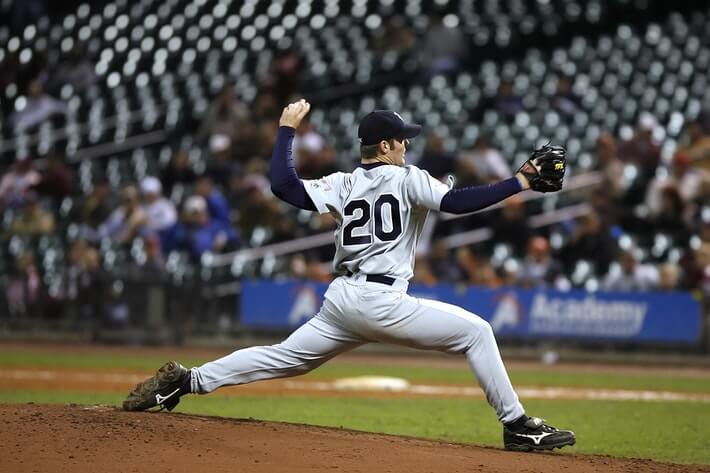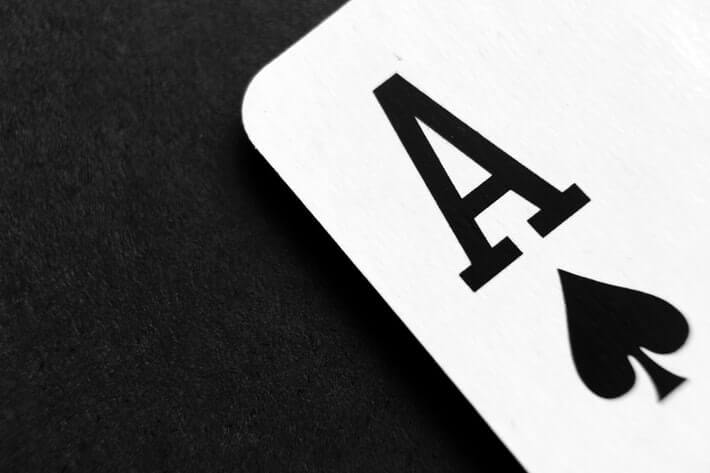Baseball isn’t your typical contact sport, but that doesn’t mean it’s a tranquil one either. A professional bettor and almost anyone who frequents online gambling venues will tell you that placing bets in this sports category is both exciting and highly strategic. This is confirmed by baseball’s use of sabermetrics, an analysis of in-game activity through statistics, which is used to predict the performance of players.
Bettors rely on various other strategic models to help them place a winning wager. Baseball is the perfect game for the market’s many betting types. We’ll show you how to bet on baseball events, which kinds of bets best suit your playing style, and what factors you should include to start winning big.
Staple MLB Betting Types
A betting type is like a tool; it can make all the difference in knowledgable hands and solve any problem. In baseball, some types of betting are better suited to make a profit than others. We’ll focus on a few of the wagering types you’ll find at most sportsbooks and tell you how to employ them.
| Teams | Money Line | Run Line | Total | |
| Boston | +160 | +1½ -140 | 9½ | -110 |
| LA Dodgers | -191 | -1½ +160 | -110 | |
Moneyline
With money line bets, you are wagering on which team will win the match. These are favorites in baseball betting due to their simplicity. However, most overlook the tactical options that are on offer.
Here, you wager on a favorite that is marked with a minus sign or an underdog marked with a plus sign. Sportsbooks choose a team that they expect to win as the favorite. As such, betting on the favorite comes with better money line odds but modest amounts for winners. On the other hand, wagering on an underdog is a riskier venture that generally brings more returns.
Let’s circle back to our table with the teams: the game is between the Boston Red Sox and LA Dodgers. We’ll use this as an example to have baseball betting explained. The sportsbook operator has selected the favorite for this event.
In our case, the LA Dodgers are expected to win this match, with money line odds of -191. This means you’ll have to wager $191 to get $100 or $19.10 to win $10. If the LA Dodgers win, you get $29.10. When you bet on favorites, you’re risking more to earn less due to the betting juice.
Wagering on underdogs works differently. Since betting on them is already a risky proposition, you stand to win more by wagering less. Hence, if you place a $10 baseball bet on Boston to win, you might get $16 back or $26 in total.
Betting on underdogs tends to generate more profit in the long run due to money line odds. You can test this by placing ten bets on an underdog team and comparing the earnings to the same number of wagers on a favorite.
The most important thing about the money line style of betting is to draw the line or decide how much betting juice you’ll take.
Baseball Totals
When you bet on baseball games, you’ll have to do it in states where sports betting is legal, of course. There, you’ll often see many of your counterparts betting on totals at both brick-and-mortar sportsbooks or betting sites.
Totals are popular because they are easy to master. They rely on the total number of scored runs in a match. You are betting if the total number of scored runs will be over or under a number that a bookmaker sets.
In the Boston Red Sox vs. the LA Dodgers game, our table notes that the oddsmaker predicted 9½ runs. As a bettor, you may wager “under” or “over” this number. In baseball sports betting, this means you’re wagering that there will be nine wins scored or less for the under bet. To win over the totals, you’ll bet that there will be ten or more wins.
The usual betting juice in totals is -110 each way to participate, where you risk $11 to gain $10. And the number 9½, or 9.5 in decimals, is a push. Oddsmakers set the push to avoid situations where all runs match the total, which would translate into no losers or winners. In such cases, oddsmakers have to refund bets.
Run Line
In baseball online betting, run lines are the equivalent of point spread or handicap betting in other sports like American football. The main difference is that with a run line, you’re making the spread on the match and the payline depends on the money line odds. For example, betting on the favorite (LA Dodgers) with a -1½ pay line means that the team needs to score two runs or more. If you bet on the Boston Red Sox with a +1½, they can win the match or lose by one run for you to make money.
In our table, we have -1½ +160 for the LA Dodgers that represents the run-line baseball betting model in its entirety. If we add the money line odds, we know that the team needs to win two runs, and we need to lay $16 for every $10 we want to win. By betting on a +1½ -140 run line for the Boston Red Sox, we’ll win $14 for every $10 we gambled if the Red Sox either lose the game by one run or win the match.
Wagering Tips in Baseball
With 2,430 regular games in one season, there are plenty of variables affecting the baseball wagering outcome. It’s challenging to consider and calculate all the factors on your own before you place a bet. That said, there are a few critical ones that will give you the edge.
Study the Weather
If you decide to go for totals, you’ll gain a lot if you know the weather forecast for the baseball game. Even the slightest bit of wind blowing in at a mere 5 mph can benefit under wagers since home runs can change to warning track flyouts. With baseball bets, winds of up to 8 mph that are blowing out can convert fly balls into home runs and benefit overs.
The Umpire’s History Counts
All referees are just people like us. They make mistakes, and their behavior follows certain patterns. We can use this data to predict how they affect home teams, road teams, or ROI. Certain umpires may not be able to withstand the pressure, and they cave in to the crowd, which helps home teams. Other baseball judges harbor antagonistic sentiments towards the public, helping road teams gain an advantage.
Some umpires have larger strike zones, leading to more batted balls and strikeouts during the game, which is excellent news for under bettors looking for baseball betting tips. Other arbitrators have smaller strike zones that benefit uppers due to more victorious runs or walks. Either way, a single umpire can significantly affect the ROI and participating teams.
Don’t Bet on Big-Time Favorites
There are plenty of average punters who regularly bet on their favorites but know little about betting lines. Bookies eagerly await such players since they can make more money on big favorites and modify the betting lines to provide a better balance.
In the end, bettors pay the most when they wager on a favorite with overly expensive odds, which is not the best way to bet on baseball. If a favorite wins, you’ll get a modest sum of money, and if they lose, you’ll lose a lot.
Bet on Underdogs
Betting pros tend to constantly wager on underdogs, and they win more from these bets in the long run. The reason is simple – when an underdog loses a match, you only squander the amount you risked. However, if they win, you get payouts that grow substantially larger over time.
Don’t Follow the Crowd
We’ve already demonstrated why average sports fans make poor betting decisions that ruin everyone else’s fun. They tend to choose ill-informed, impulsive, and unsubstantiated opinions. One of the essential baseball tips when betting is not to follow the crowd. The crowd is always predictable, as they’ll stop betting on a team that loses a few matches.
Instead, use artificially overblown numbers and public bias to get better results. You’ll get better outcomes because you are not betting against the house that always wins.
Don’t Leave RLM Out of Sight
Here is a crucial betting tip: Always follow the reverse line movement or RLM. Balanced betting odds are essential for bookmakers. Suppose one side of the wager suddenly sees lots of action. In that case, there is less betting happening on the other side, which doesn’t sit well with operators, their books, and the overall betting on MLB events.
To offset this, operators move the line in the opposite direction to lure bettors into participating with the other side of the bet. We call this reverse line movement, and experienced players follow this line. They are getting better wagering percentages and odds as the reverse line is moved in their favor.
Keep an Eye on Your Bankroll
Last but not least, never lose sight of your bankroll. Draw a line in the sand by deciding exactly how much you’re prepared to lose on a single bet, and regardless of how tempting a wagering opportunity may be, avoid crossing that line at all costs.
Here is another critical MLB betting guide tip: If you want to protect yourself from losses, bet 1% or 2% of your entire bankroll. If you’re one of the more ambitious bettors, using between 4% and 5% of your bankroll is more than enough. The golden middle is 3% or $6 from your $200 bankroll. Avoid parlay wagering that appears to have vast payouts and instead offer unfair betting odds.
FAQ
How to bet over/under in baseball?
For starters, it’s important to note that standard juice is 110 each way on totals. Some players may expect 120. Keep an eye on the reverse line movement for better wagering odds and bet on the underdog.
Is betting on baseball hard?
It is no more complicated than betting on other sports. Make sure to focus on fewer betting types, such as money lines, totals, and run lines. You’ll need to conduct a thorough analysis ahead of the wager. Check the weather forecast as it will significantly impact the ball direction and study the umpire’s past matches to see how they’ll affect ROI and the teams. Then, focus solely on an underdog team and don’t follow the crowd unless you see a clear opportunity to use the situation to your advantage.
How to bet on baseball in Vegas?
Give the ticket writer the bet number of the team you want to bet on and the wagering amount you’re placing.




